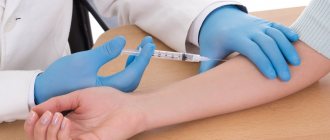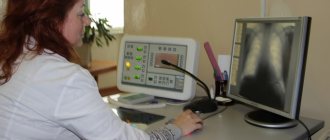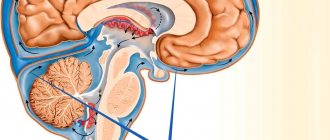The disease, known at the beginning of the twentieth century as consumption, which was treated with increased nutrition and stay in a warm climate, is considered fatal to this day.
Tuberculosis knows no boundaries between races, countries, and social strata. Anyone can get this disease, as it is caused by the tuberculosis bacillus, which is extremely resistant to external influences and is transmitted by airborne droplets, contact and food.
How do they get infected?
It is easy to become infected with the tuberculosis bacillus. However, this does not mean at all that if you are in contact with a tuberculosis patient and a tuberculosis bacillus enters your body, you will immediately get sick. For a disease to occur, additional factors must be involved: for example, the state of immunity (if it is reduced) and the general reactivity of the body.
Article on the topic Mantoux test or Diaskintest. How to more accurately identify tuberculosis? One of the main tests, the Mantoux test, is used to judge whether there was contact with the tuberculosis bacillus or not, and whether it is in the body in a dormant state or not. In a fairly large percentage of cases, the Mantoux test is positive. The tuberculosis bacillus enters the human body during life, and it can remain there in such a dormant state, when it does not cause any harm at all, but simply resides. The body separated her, encapsulated her, and she sleeps. Sometimes, but this happens quite rarely, the body manages to free itself from this stick.
Where and how can you become infected with tuberculosis?
Anyone can become infected with tuberculosis anywhere (in the subway, on a bus, at a party). Every second around the globe, one person becomes infected with tuberculosis. The main source of infection is coughing patients with pulmonary tuberculosis (pulmonary tuberculosis), as well as sick animals. It has been established that one patient with a chronic form of tuberculosis can release up to 7.5 billion microbes within 24 hours and infect an average of 15 people per year. When coughing, tiny droplets containing tuberculosis bacteria are sprayed at a distance of 1-1 ½ meters from the patient. In one cough impulse, up to 3 thousand of them are formed. These droplets then dry out and turn into dust particles. Infection usually occurs indoors, in the air of which such particles can persist for a very long time. People who are in contact with a sick person for a long time in a poorly ventilated area are especially at risk: in a prison cell, army barracks, hospital ward or with their family. Contact infection from people and animals with tuberculosis is also possible. In this case, mycobacteria affect the skin and mucous membranes. Infection by contact can occur when using contaminated clothes of patients and their other items (toys, books, dishes, etc.), when caring for sick animals. Cases of contact infection among surgeons, pathologists, and butchers have been described. In children and adolescents, the food route of transmission of infection is of significant importance. This is observed when eating infected meat, milk and dairy products from a cow with udder tuberculosis. Food contamination, as a rule, leads to a process in the abdominal organs. Intrauterine infection of the fetus from a mother with tuberculosis is relatively rare. In this case, an important condition is that the child’s place is affected by tuberculosis.
HOW IS TUBERCULOSIS INFECTION DETERMINED?
Infection with Mycobacterium tuberculosis is determined using a special tuberculin skin test (Mantoux test). The method that uses a tuberculin test is called tuberculin diagnostics. Tuberculin diagnostics is not used for all categories of the population, but only for children, adolescents and young people under 30 years of age. Its main goal is to identify tuberculosis infection and select individuals for anti-tuberculosis vaccinations. To perform a tuberculin test, tuberculin is used. It is a filtrate of heat-killed Mycobacterium tuberculosis and consists of proteins, polysaccharides, lipid fractions and nucleic acids. Considering the fact that tuberculin does not contain live Koch bacilli, its introduction into the body cannot cause tuberculosis. Tuberculin is injected with a sterile syringe into the skin of the middle third of the forearm. The test results are assessed by a doctor or specially trained nurse after 72 hours. The following changes may occur at the site of tuberculin injection:
- prick reaction, i.e. only a mark from the prick;
- hyperemia (redness of the skin);
- papule (thickness and elevation of the skin, determined by eye or touch), vesicle (vial with liquid), etc.
A prick reaction is regarded as a negative tuberculin test, hyperemia or a papule up to 5 mm in size is considered doubtful, a papule larger than 5 mm in size or a vesicle is considered positive. Negative and positive tuberculin tests are of greatest importance in anti-tuberculosis work, since in case of a doubtful tuberculin test, no therapeutic and diagnostic measures are taken. A negative tuberculin test in most cases indicates the absence of infection with Mycobacterium tuberculosis. Persons with such a test who are either over 7 years old or live in contact with a patient with tuberculosis are given anti-tuberculosis vaccinations. A positive tuberculin test can be for two reasons: either as a result of infection of the body with Mycobacterium tuberculosis or as a reaction to an anti-tuberculosis vaccination. The final diagnosis is established only after an in-depth examination of the child (teenager or other person) by a phthisiatrician. A positive tuberculin test due to the body’s response to the anti-tuberculosis vaccine is not a disease, but a normal condition that does not require treatment and is observed for 5 to 7 years after vaccination. Over time, the post-vaccination reaction fades away. A positive tuberculin test due to infection with Mycobacterium tuberculosis is also not a disease, but under certain conditions it can turn into a disease. Positive tuberculin tests can be observed both in people recently infected with tuberculosis and in people who have been infected for a long time.
To prevent tuberculosis, it is most important to identify fresh, recent or so-called primary infection. The earlier the primary infection is detected in a child (adolescent or other person) and a set of preventive measures is prescribed, the greater the likelihood of preventing the development of the disease. Phthisiatricians call a positive tuberculin test in a primarily infected person the term “virage.” Persons with a “bend” in the tuberculin test are subject to a thorough clinical and radiological examination in the conditions of an anti-tuberulosis dispensary. To prevent the infection from becoming a disease, they are prescribed anti-tuberculosis drugs (tubazid, ftivazid, etc.) for 2–3 months.
DO ALL PEOPLE INFECTED WITH TUBERCULOSIS GET THE DISEASE?
Getting infected with tuberculosis does not mean getting sick. The probability of developing active tuberculosis in a healthy person who has received Koch's bacillus is about 5 - 10%. In this case, the disease most often does not occur immediately, but in the first 1 to 2 years after infection. Most people infected with mycobacteria do not develop tuberculosis. The only evidence of the presence of tuberculosis bacillus in the body of these practically healthy people is positive tuberculin tests.
WHAT FACTORS CONTRIBUTE TO THE TRANSITION OF TUBERCULOSIS INFECTION INTO A DISEASE?
Two factors play a role in the occurrence of the disease in a person infected with tuberculosis: the number of mycobacteria that have entered the body, as well as the state of the body’s defenses. The number of mycobacteria entering the body depends on the proximity of contact with a patient with tuberculosis and the massiveness of his bacterial excretion.
The state of the body's defenses is influenced by a number of factors:
- food quality. There is strong evidence that fasting or malnutrition reduces the body's resistance. “A well-fed person does not get tuberculosis,” say TB doctors.
- consumption of toxic products. Smoking tobacco and drinking alcohol significantly reduce the body's defenses; Hormones and other drugs used in the treatment of certain diseases have the same effect.
- accompanying illnesses. HIV-infected people, patients with diabetes mellitus, respiratory diseases, mental illnesses, gastric ulcers and duodenal ulcers, etc. are especially susceptible to tuberculosis.
- stress. It has been proven that stress and depression negatively affect the immune system.
HOW TO PROTECT YOURSELF AND YOUR CHILDREN FROM TUBERCULOSIS?
There are specific and nonspecific methods for preventing tuberculosis. Non-specific methods include:
- measures that increase the body's defenses (rational work and rest, proper nutrition, quitting smoking and drinking alcohol, hardening, physical exercise, etc.);
- measures to improve the health of the living and working environment (reducing overcrowding and dust in premises, improving ventilation).
- Specific methods for preventing tuberculosis include:
- carrying out anti-tuberculosis vaccinations;
- chemoprophylaxis (taking chemotherapy to prevent tuberculosis).
The anti-tuberculosis vaccine forms the body's immunity to tuberculosis infection and therefore is the main method of specific prevention of tuberculosis in children. The tuberculosis vaccine can prevent the development of tuberculosis in 80% of cases within 15 years if vaccination is carried out before infection, i.e. children with negative tuberculin tests.
It has also been established that widespread vaccination reduces the incidence of tuberculosis by 5-10 times and sharply reduces the appearance of severe, acutely progressive forms of the disease. If the disease occurs in a vaccinated child, it proceeds more benignly, without complications, in the form of mild forms. The main vaccine preparation widely used throughout the world for the specific prevention of tuberculosis is the BCG vaccine. It is named after its authors - the French scientists Calmette and Guerin. As a result of repeated subcultures over 18 years on a special medium, Calmette and Guérin obtained in 1914 a variety of mycobacterium tuberculosis that lost its ability to cause disease, but retained the ability to create anti-tuberculosis immunity. Numerous experiments on infecting animals have convinced scientists of the harmlessness of this type of mycobacteria. In 1921, newborn children in France began to be vaccinated. Somewhat later, in other European countries, and starting in 1925, vaccination against tuberculosis began to be used in the USSR. BCG vaccination in our country is given to all healthy newborns on the 3rd-4th day of life. The protective effect of the vaccine does not appear immediately, but only 1.5-2 months after its administration. In this regard, before the mother and child are discharged from the maternity hospital, all members of the newborn’s family, as well as other persons living with them in the same apartment, are required to undergo a preventive X-ray fluorographic examination for tuberculosis. In cases where there is a patient with tuberculosis in the family of a newborn, he is isolated from the child for at least 2 months after vaccination of the newborn. As a rule, in such situations, the patient is hospitalized in a tuberculosis hospital, and the apartment is thoroughly disinfected. If the patient refuses hospitalization, then the mother and child are detained in the maternity ward for 6-8 weeks. The duration of immunity caused by the BCG vaccine is approximately 5-7 years. After this period, the need for revaccination (re-vaccination) arises.
In accordance with the current Order of the Ministry of Health of the Republic of Belarus, BCG revaccination is carried out at the age of 7 years for children not infected with tuberculosis, i.e. with negative tuberculin tests. The second method of specific prevention of tuberculosis - chemoprophylaxis - consists of administering anti-tuberculosis drugs to healthy individuals who are at risk of developing the disease. Chemoprophylaxis stimulates immunity to tuberculosis. Scientists have proven that the incidence of tuberculosis during chemoprophylaxis is reduced by 5-7 times. In our country, chemoprophylaxis is prescribed:
- persons in contact with patients who release bacteria;
- persons newly infected with tuberculosis, in whom a positive or sharply positive tuberculin test was detected for the first time, the so-called “virage”;
- persons with inactive tuberculosis changes with a high risk of relapse of the disease (exacerbation of concomitant chronic diseases that weaken the body; the postpartum period; unfavorable working and living conditions, etc.).
The main drug for chemoprophylaxis is tubazide.
For whom is Koch's wand dangerous?
At risk are medical workers, people in contact with patients who have positive bacilli secretion, as well as children. Children have an imperfect immune system and are more likely to be affected by tuberculosis bacteria.
It is very important to get your children vaccinated with BCG in the maternity hospital. When a child is born, his immune system is imperfect and completely defenseless against the tuberculosis bacillus. If it enters the body in children under one year of age, it causes a very severe form of the disease, including tuberculous meningitis. It is also important to understand that if a child under the age of one year comes into contact with a patient with tuberculosis, especially one who is actively excreting bacilli, then the risk of not just getting sick, but contracting a fatal form of tuberculosis is very high. After all, if you refuse the vaccine, the child’s body may encounter not an inactivated Koch bacillus, but a wild one. And it will be difficult for him to cope with it on his own.
Dormant bacterium. Over 8 years, mortality from tuberculosis in the Russian Federation has decreased by 66% Read more
Prevention measures
The main measure to prevent a child from getting tuberculosis is vaccination with the BCG vaccine. It contains mycobacteria that are not capable of causing the onset of the disease, but are recognized by the immune system as hostile to the body. At the same time, immunity is developed that protects the child from tuberculosis for fifteen years.
Preventive methods to prevent infection are not complicated and are accessible to anyone:
- maintaining hygiene. The rule should be to wash your hands as often as possible, especially for residents of cities, where the likelihood of encountering a bacteria carrier is much higher;
- Thorough wet daily cleaning of the house using products containing chlorine. Mycobacteria are very sensitive to chlorine, and dust collection minimizes the risk of bacteria accumulation on the surface of the floor and objects;
- daily ventilation of the house;
- nutritious nutrition, including meat, eggs, fats and full-fat dairy products;
- Walking in the fresh air, playing sports, physical activity - these measures help strengthen the immune system.
If there is a threat of infection with tuberculosis, contact with a sick person, or a carriage of mycobacteria is detected, treatment with chemotherapy is prescribed as active prevention.
Benefits of vaccination
BCG was obtained a long time ago, but is still relevant. When it was created, those genes that cause the disease were removed from the stick, i.e., in fact, it is harmless, it does not cause the disease on its own. The main thing is to understand the principle of its operation: immunity in tuberculosis is non-sterile, i.e., as long as this bacterium (the one in the vaccine) is present in the body, the second bacterium will not be able to act and cause the disease. And this means that a virulent bacterium will not be able to cause the tuberculosis process.
Article on the topic
In facts and figures: until the 20th century, tuberculosis was practically incurable
Psychosomatics of infection
Tuberculosis is one of the most dangerous diseases of humanity. Statistics forced us to pay attention to the psychosomatics of this disease. Despite all kinds of examinations and preventive measures, the incidence rate decreased by only 5-10 percent. Psychologists and psychotherapists have come to the conclusion that negative emotions and constant stress provoke the development of tuberculosis [15]. People do not want to perceive the realities of the world, they do not allow themselves to breathe deeply and enjoy life.
How to recognize?
It is often difficult for a person who has already begun the tuberculosis process to understand this. The symptoms here are usually the following: a person loses weight, he develops weakness, and night sweats. And if this is a pulmonary form of tuberculosis, then there may be a hacking cough. The temperature is low, usually subfebrile (37.2), intermittent. And such clinical symptoms, which are not very pronounced in themselves, can be blurred. It is difficult to determine the disease by eye. And therefore it is important to undergo fluorography annually in order to see pathological changes in time. With tuberculosis, it is necessary to determine the onset of the process as early as possible. The earlier treatment is started, the more favorable the outcome. The later, the more dangerous the situation becomes, and the possibility of an unfavorable outcome increases.
Question answer
What professions are people required to undergo fluorography annually?
The emergence of extrapulmonary tuberculosis
Extrapulmonary tuberculosis occurs during long-term diseases of other human organs [12]. We are talking about diseases that cannot be treated. To make an accurate diagnosis, the patient is sent for a consultation with a TB specialist and undergoes a number of necessary tests [13].
Extrapulmonary tuberculosis is curable with timely and correct treatment, which should be strictly under the supervision of a doctor.
Nervous system
Tuberculosis of the nervous system occurs when Koch's bacillus enters the blood vessels of the brain. When infected, the blood supply to the brain is disrupted, intracranial pressure increases, and cerebral edema is possible. The person becomes more irritable than usual, there is constant fatigue, and headaches are present.
Osteoarticular tuberculosis
The spine and pelvic bones are most often affected by bacteria [14]. If the inflammatory process has not gone beyond the bone, then the person may experience minor pain. If tuberculosis spreads to the joint, then the person may experience severe constant pain and limited movement.
The affected bone becomes very fragile, and this significantly increases the risk of fracture even with the slightest damage.
Genitourinary system
Symptoms of damage to the kidneys, genital organs (uterus, ovaries, testicles) and urinary tract are very similar to the symptoms of other diseases of the genitourinary system, so the diagnosis is made by a urologist, gynecologist and nephrologist together with a phthisiatrician.
Skin lesions
Skin lesions often occur when a person is first infected with Mycobacterium tuberculosis. A person's skin color and structure changes, purulent wounds appear, and subcutaneous lymph nodes enlarge.
Gastrointestinal infection
The small intestine and cecum are also often affected. The disease can develop after eating foods that have been contaminated with tuberculosis pathogens, such as dairy products.
Best materials of the month
- Coronaviruses: SARS-CoV-2 (COVID-19)
- Antibiotics for the prevention and treatment of COVID-19: how effective are they?
- The most common "office" diseases
- Does vodka kill coronavirus?
- How to stay alive on our roads?
Lymphatic system
In the early stages of tuberculosis, when the lymphatic system is affected, a moderate inflammatory change in the lymph nodes is observed. It occurs without pain and does not cause an increase in body temperature. As the disease progresses, the lymph nodes are affected by the purulent process and fistulas develop. This is what poses an epidemiological danger to healthy people.
How to treat?
The tuberculosis bacillus is very stable and easily resists the body's defenses and the effects of various medications with the help of various factors. Therefore, drugs that act on it have been developed specifically for the tuberculosis bacillus.
However, now a situation has arisen in which the number of tuberculosis bacteria that are resistant to one or two such drugs or to many is increasing. This is the so-called multidrug resistance and extensive drug resistance. And this greatly complicates treatment. Treatment for tuberculosis can take years. And it is extremely important not to interrupt the treatment. Because the stick can leave, become encapsulated, sit somewhere in the body and leave again. Therefore, systematic treatment should continue until the TB specialist is clearly sure that the process has been completed.
Etiology of the disease
The causative agent of tuberculosis is mycobacteria (bacteria of the genus Mycobacterium). There are 74 species of these bacteria in total. They spread and are transmitted in water, soil, animals and people. The causative agent of the disease is Koch's bacillus, often of the human type. The lifespan of Koch's wand in the ground is up to 40 years.
Due to improper or poor-quality treatment of pulmonary tuberculosis, mycobacteria may exhibit a protective reaction to drugs aimed at destroying them. They can also change, which complicates further diagnosis of the disease. If the patient stops treatment before all bacteria are killed, the remaining microorganisms may mutate and be transmitted to other people in an unstable form.
Content:
- Etiology of the disease
- Routes of infection
- Factors influencing the development of the disease
- Causes of lung damage
- The emergence of extrapulmonary tuberculosis
- Psychosomatics of infection
- Causes of relapses
- Genetic aspect
Tuberculosis, which is caused by different types of mycobacteria, is different from each other. The main species characteristic of mycobacterial disease is pathogenicity. Pathogenicity itself is manifested in virulence (degree of pathogenicity), which varies significantly depending on environmental factors [7]. It can also manifest itself differently depending on the state of the microorganism that is infected with the bacterium.
Routes of transmission of tuberculosis
Considering the extreme contagiousness of mycoplasma, scientists believe that about ⅓ of the world's population is carriers of it. There are several ways to catch Koch's bacillus:
- By airborne droplets. It is clearly in the lead, since more than 90% of disease cases are transmitted when a patient coughs. Even a minute of being near an infected person can be dangerous. Fine particles of sputum hang in the air for several minutes, so the risk of contracting an infection is high when visiting patients’ homes or staying in the same rooms.
- By contact. Mycobacteria survive well on household items, door handles, railings and all surfaces that are exposed to the respiratory tract of patients. They are preserved even on street sidewalks and stairs.
- In utero. Thus, tuberculosis is rarely transmitted, but from an infected mother the fetus can pick it up during childbirth, and the newborn can pick it up through breast milk.
- Food route. In rural areas, veterinarians often become infected with tuberculosis when accepting livestock products for inspection.
Obviously, you can become infected not only in prisons and homeless shelters. Neighbors, colleagues, travel companions, and relatives can be carriers of the tuberculosis bacillus.











